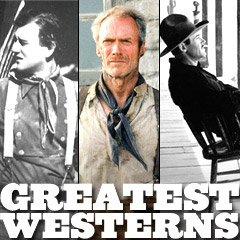
|
Greatest Westerns 1970s |
| Film Title/Year/Director/Length/Studio, Setting (or Time Period) and Brief Description | |
Chisum (1970)
An old-fashioned range-war western with John Wayne. Reformed New Mexico cattle ranch owner John Simpson Chisum (John Wayne) discovered that rival corrupt and powerful businessman Lawrence Murphy (Forrest Tucker) was trying to expand his own ranch and gain control of his surrounding land by illegally foreclosing mortgages, making governmental bribes, and rustling cattle and horses. Murphy also had influence over the appointed Sheriff Brady (Bruce Cabot). To combat the greedy Murphy, Chisum sought the aid of neighboring cattleman - effete Englishman J. H. Tunstall (Patric Knowles) and Tunstall's houseguest - the notorious Billy "The Kid" Bonney (Geoffrey Deuel). Chisum attempted to open his own general store and bank in the town of Lincoln, to be run by honest lawyer Alex McSween (Andrew Prine). When traveling to Santa Fe to report to Governor Sam Axtell (Alan Baxter) about Murphy's evil-doings, the unarmed Tunstall was murdered by Deputy Sheriff Morton (Robert Donner), causing Billy to vengefully kill Brady and his deputies. Bounty hunter Dan Nodeen (Christopher George) was dispatched by the governor as the new sheriff, to arrest Billy and his gang - leading to a fierce gunfight between the two sides. To create chaos and break down barricades during the shootout, Chisum stampeded his cattle through town, while Billy ran Nodeen out of town and Chisum killed Murphy in a fistfight. In the aftermath when order was restored, buffalo hunting drifter Pat Garrett (Glenn Corbett) was appointed sheriff. |
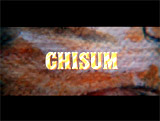
|
El Topo (1970,
Mex.) (aka The Mole)
Argentinian director/star Alejandro Jodorowsky's film was a self-conscious, surrealistic, often incoherent and incomprehensible, unique and avant-garde film (translated "the Mole"). It was a strange variant of the 60s "spaghetti" westerns - both gory and spiritual - and the first 'midnight movie' film. Perfectly timed for its counter-cultural era of free love and cannabis freak-outs, it was up to late-night, 'midnight movie' viewing audiences to interpret the self-conscious, spaced-out and often incoherent and incomprehensible avant-garde cult film. It told the surreal story of the existential and spiritual quest, with Christian and Eastern philosophy symbolism, of a black-clad, violent gunfighting title character (the director himself). The film opened with El Topo riding in the Mexican desert with his naked son (Brontis Jodorowsky) on the saddle in front of him. In the startling opening sequence, they found the bloody remains of a town massacre where animals were gutted and people were decimated, leaving a river of blood. When threatened by three crazed evil-doer bandits, El Topo quickly dispatched with them, and then sought further vengeance in a mission town against the fat, balding (with a toupee), pasty-faced but vicious and sadistic Colonel (David Silva) and his outlaw gang. After executing the Colonel's gang members and castrating the Colonel (who then committed suicide), El Topo rescued the man's terrorized concubine-slave (Mara Lorenzio) and rode off with her into the desert. After raping her and imparting sexual fertility to her (finding eggs and drawing forth water), he named her Marah ("bitter water"); She convinced him that for her to best love him, he had to prove himself by journeying onward to defeat and kill the "four great gun masters" who lived in the desert. Following the demise of all four adversaries and acquiring their wisdom, El Topo was betrayed by a 'Woman in Black' named Desconocida (Paula Romo), a whip-cracking bi-sexual gunslinger, who became the lesbian lover of Marah. In the second part of the film years later, a group of small-statured deformed cripples (exiled and outcast cave-dwellers) worshiped him as a god and savior, and expected him to free them. Simultaneously, El Topo appeared to have found enlightenment and holy "sainthood" and was born again. In a gun-blasting finale, El Topo shot all of the oppressive cultist clan members in a frontier town, and then immolated himself in the dusty street. A swarming beehive grave was constructed for El Topo's remains. The film ended as El Topo's grown son, his dwarf girlfriend and child rode off on the horse into the desert, mirroring the scenes in the film's opening. |
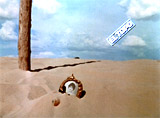
|
Little Big Man (1970)
A serio-comic, revisionist Western and one of the best (and most successful) films of the 1970s. The anti-establishment, unconventional western depicted the inhumane treatment of Native Americans within its heavy-handed, fictional biopic tale (with the title character shuffling back and forth between Indian and white cultures). The daring film also served as a veiled criticism of Christian hypocrisy and a critique of the genocidal mistreatment of Native Americans (paralleling the My Lai Vietnam massacre in 1968). It opened with 121 year-old Jack Crabb (Dustin Hoffman) recalling his tall-tale epic exploits in the West to a skeptical historian-interviewer (William Hickey), and claiming to be the only white survivor of the Battle of Little Big Horn. Crabb surveyed his various incarnations - beginning as an orphaned and adopted Indian. Orphaned at age 10 with his sister Caroline (Carol Androsky), Jack was raised by Cheyenne Indians and fatherly Old Lodge Skins (Chief Dan George) after his pioneer parents were killed crossing the Great Plains. He acquired the nickname 'Little Big Man' during adolescence when he saved the life of Younger Bear (Cal Bellini) in a raid against Pawnees. Subsequently, he was seized by white men during a battle and raised by stern Rev. Silas Pendrake (Thayer Drake) and his sex-obsessed, seductive wife (Faye Dunaway). The saga continued as Crabb hawked patent medicines with snake-oil huckster-peddler Allardyce T. Merriweather (Martin Balsam) and became a gunfighter known as the "Soda Pop Kid." He rubbed elbows with contemporaries including gunslinger Wild Bill Hickok (Jeff Corey), married Swedish Olga (Kelly Jean Peters), and ran a haberdashery. Then after heading west, he scouted for the racist, pompous, and foolhardy Gen. George A. Custer's (Richard Mulligan) Cavalry unit, then deserted and traveled to the reservation led by now-blind Old Lodge Skins. Crabb fathered a child with Indian Sunshine (Amy Eccles). But then Custer's forces struck and only Jack and Old Lodge Skins survived the attack at the Washita River (set up as a criticism of the My Lai Vietnam massacre). Later, he became an alcoholic and a hermit, and was rehired by Custer as a scout. The vengeful Crabb was present when Custer's 7th cavalry forces were massacred by Cheyenne Indians at the Little Big Horn in 1876. He was saved when recognized by Younger Bear, and was reunited with dying Old Lodge Skins. |
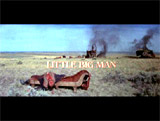
|
A Man Called Horse (1970)
A violent, melodramatic, torture-strewn, gory western told from the viewpoint of the Native Americans. Although viewed as an authentic look at Indian life, it also sensationalized its subject matter. During a hunting expedition in the Dakotas in the early 19th century, the camp of blonde-haired, wealthy and aristocratic Lord John Morgan (Richard Harris) was attacked by Indians. Due to his blonde hair, he wasn't scalped, but was captured and brought to Sioux Chief Yellow Hand's (Manu Tupou) camp. He was humiliated and ridiculed when made a slave to old squaw Buffalo Cow Head (Judith Anderson), and as her beast-of-burden was named "Horse." Over time, he learned the customs and language of the Sioux Indians, and proved himself by killing two Shoshone war party scouts. When he desired to marry Running Deer (Corinna Tsopei, Miss Universe of 1964), the Chief's daughter, he was faced with the painful Sun Vow torture (completely fictional). In the film's most gruesome sequence, his body (hung by chest skin from ropes and talon hooks) was hung high in the air. He exhibited further bravery when during a Shoshone attack, he killed the opposing chief, although Yellow Hand was also killed, and so was his mortally-wounded pregnant wife. As Buffalo Cow Head's son (to prevent her from being outcast), he was named the tribal chief. Upon her death, he returned to England. |
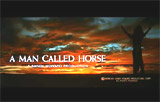
|
McCabe & Mrs.
Miller (1971)
Director Robert Altman's dimly-lit, lyrical and cynically-bleak tale was about a rough turn-of-the-century mining town in the northwest frontier. It was a revisionistic western about the American frontier, preaching the evils of capitalism, and haunted by Leonard Cohen songs on the soundtrack. Warren Beatty starred as John McCabe, a two-bit gambler, vain card-sharp and foolish entrepreneur who used his poker-game winnings to build a classy saloon-casino-brothel in the remote, makeshift Washington community of Presbyterian Church on the Canadian border. It portrayed his ultimately unsuccessful efforts to build a capitalistic business. McCabe forged what he believed would be a profitable business alliance-partnership with shrewd Cockney drifter-prostitute-brothel madam Mrs. Constance Miller (Julie Christie) - she would be the director of the whorehouse and manage the prostitutes, with a promise to transform the initial tents into a more professional bordello within the soon-to-be booming town. She was also addicted to pipe-smoked opium, and had sex with McCabe as a paying customer. Due to his lucky success, McCabe was confronted by representatives of the Harrison Shaughnessy Mining Company that wanted to buy him out for $5,500 (the offer was increased to $6,250), but he inexplicably turned them down. McCabe inexplicably and stubbornly refused to be bought out by the corporate mining company. He then faced the ugly consequences - the appearance of three hired enforcers: gunmen Butler (Hugh Millais), Breed (Jace Vander Veen) and Kid (Manfred Schulz). In the final celebrated sequence set during a snowstorm, he temporarily and cowardly evaded them by taking refuge in the church, then shot and killed the three men, but mortally-wounded himself. McCabe succumbed in a snowdrift - a victim to big business, while Mrs. Miller succumbed to her addiction to her drugs. |
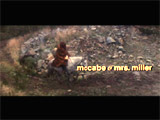
|
Jeremiah Johnson (1972)
A survivalist, anti-establishment western, beautifully photographed. Robert Redford starred as the title character Jeremiah Johnson, a real-life legendary mountain man, a bear-trapper who lived among hostile Crows and the harsh climate of the natural world. The film's tagline: "some say he's dead...some say he never will be." He was an ex-soldier and societal drop-out who chose to return to nature (a timely countercultural and environmental subject in the 1970s). He came upon the corpse of Hatchet Jack, frozen upright in the snow, who bequeathed him his first gun. Almost perishing, he enlisted the aid of white trapper Chris "Bear Claw" Lapp (Will Geer), who taught him skills of how to trap, fish, and interpret Indian signals. Later, he reluctantly adopted mute adolescent son Caleb (Josh Albee) of a deranged-from-grief widow whose settler family had been massacred, and he rescued bald-headed trapper Del Gue (Stefan Gierasch) buried in the sand by hostile Blackfoot Indians. Flathead Indians gave him the chief's daughter Swan (Delle Bolton) to be his squaw wife and the three lived in a log cabin. Johnson's domestic life was changed forever when he was forced to lead a US cavalry unit (on a rescue mission for a broken-down homesteading wagon train) across a sacred Crow burial ground. As he suspected, the enraged Crow brutally slaughtered his wife and Caleb upon his return, and afterwards, he sought retaliatory revenge. The fate of Johnson was left ambiguous, although he was both sought after and revered by the Crow. |
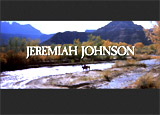
|
Ulzana's Raid (1972)
Director Robert Aldrich's R-rated revisionist western (an allegory of the Vietnam War) was a brutal and harsh story of warfare between Chiricahua Apache warriors, Arizona homesteaders and settlers, and the cavalry sent to protect them. The tagline stated: "To Defeat the Apaches, They Had to Be Just as Savage." Burt Lancaster starred as aging army scout and Indian fighter McIntosh, who maintained respect for the Indians led by the vicious reservation-fugitive Ulzana (Joaquin Martinez) and his warring tribe utilizing guerrilla tactics. Bruce Davison co-starred as fresh and idealistic West Point graduate Lieutenant Garnett DeBuin with Christian ideals, although he soon exhibited racist anger at Ulzana, known for rape, corpse mutilation, and torture. The mission to quell the Indians included McIntosh, DeBuin, veteran Sergeant (Richard Jaeckel) and Apache scout Ke-Ni-Tay (Jorge Luke) who knew Ulzana (their wives were sisters). During prolonged tactical skirmishes with Ulzana, McIntosh was fatally wounded (and chose to be left in the desert to die with a cigarette), and most of Ulzana's band members were killed. In a face-to-face confrontation, Ke-Ni-Tay killed a kneeling and defeated Ulzana, whose body was given a proper burial by the less naive DeBuin. |
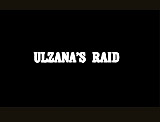
|
High Plains Drifter (1973)
In this stylistic, controversial, off-beat and bizarre revisionist western, director/star Eastwood (with his second directorial effort, and his first western) portrayed the enigmatic, anti-hero loner, named only as The Stranger (similar to Sergio Leone's "Man with No Name"). He took a stylized approach to Sergio Leone's 1960s "spaghetti" westerns and Fred Zinnemann's High Noon (1952). The bleak and violent morality tale began with the 'high plains drifter' slaughtering three hired guns after arriving in the corrupt mining community of Lago. He was then revered as a protective and righteous savior of the townsfolk, and hired by the mining company to hold off three more desperadoes on their way to town: outlaw Stacey Bridges (Geoffrey Lewis) and brothers Dan (Dan Vardis) and Cole Carlin (Anthony James). The trio had brutally whipped and killed the town's local lawman Marshal Jim Duncan (Buddy Van Horn) who was buried with an unmarked gravestone. Dwarf Mordecai (Billy Curtis) (appointed by the Stranger as the town's mayor and sheriff) and innkeeper's wife Sarah Belding (Verna Bloom), the Stranger's perverse love interest, suspected that the Stranger had unusual intentions. He made increasingly-bizarre and outlandish demands, painted the town red, and renamed it "Hell." By his cryptic presence, the almost-supernatural Stranger revealed the townspeople's secret cowardice and hypocrisy. The film ambiguously asked: was he the symbolic reincarnation of the town's murdered honest young lawman Jim Duncan, or his brother seeking retribution? In the concluding sequence, he contemptuously killed three vengeful desperadoes and then abruptly and mysteriously left. As he rode away from the ruined town as Mordecai asked: "I never did know your name." The Stranger replied: "Yes, you do. Take care." |
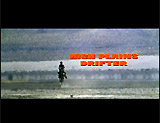
|
Pat Garrett & Billy the Kid (1973)
Noted as director Peckinpah's final western, and as a complex and challenging film that was initially cut and re-edited by MGM studios against the director's wishes. Many years later, Peckinpah released his own version of the revisionist western. Although it featured lots of legendary western character actors, it replaced traditional western content (i.e., a dramatic gun-battle showdown between good and bad guys) with more character study, ambivalence and guilt over betrayal. Set in New Mexico in 1881, the tale was about the continuing confrontation between outlaw-turned-lawman Sheriff Pat Garrett (James Coburn), and his notorious old friend, anti-hero outlaw Billy the Kid (Kris Kristofferson) (aka William Bonney). Both were aging and viewing the handwriting on the wall - reluctantly facing the slow death of the "Old West" by desecrating future forces of corrupting, cold-hearted capitalism. The two were joined by enigmatic stranger Alias (folk singer Bob Dylan in his first screen role, and singing the memorable "Knockin' on Heaven's Door"). Garrett was named sheriff of Lincoln County to defeat his old friend Billy the Kid. Although Billy was successfully jailed and awaiting execution, he escaped by shooting two deputy sheriffs. Then, in Santa Fe, Garrett was hired by the Santa Fe Ring, a group of wealthy (and corrupt) New Mexico cattle-land barons, politicians, attorneys and greedy speculators, including the governor (Jason Robards Jr.) and cattle baron Chisum (Barry Sullivan). He was commissioned to bring in Billy and end his killing sprees and cattle rustling. Billy ignored Garrett's wise advice about escaping to Mexico, and met his fateful end at the hands of his friend. Garrett stalked Billy (back at Fort Sumner rather than fleeing to Mexico) while he was making love to Maria (real-life wife Rita Coolidge) and killed him point-blank. The film ended 28 years later in 1909 near Las Cruces, New Mexico, when Garrett was ambushed and ironically assassinated by the same group, the Santa Fe Ring, who had earlier hired him to kill Billy - a Faustian conclusion. |
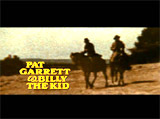
|
Blazing Saddles (1974)
The iconoclastic, not-politically-correct western was one of director Mel Brooks' funniest, most successful and most popular films. It was an unsubtle spoof or parody of all the cliches from the time-honored genre of westerns. Brooks' third feature film tagline blurb advertised: "Blazing Saddles...or never give a saga an even break!" The crude, racist and sexist film with toilet humor (the infamous bean-eating campfire scene) and foul language included the main elements of any western - a dance-hall girl, a gunslinger, a sheriff, a town full of pure folk, and more, but it twisted them around. In the small frontier town of Rock Ridge (with all the racist townspeople named Johnson) in the 1870s, pardoned black railroad worker Bart (Cleavon Little) was appointed by dim-witted and sex-obsessed Governor William J. Le Petomane (Mel Brooks) as the new Sheriff. In cahoots was evil and corrupt State Attorney General Hedley Lamarr (Harvey Korman) whose plot was to scare off the townsfolk, replace them with his own thugs, led by villainous Taggart (Slim Pickens), and complete a cheap land grab for a railroad route. Naive Bart joined with drunken "Waco Kid" gunslinger Jim (Gene Wilder) to save the town. There was also German seductress-for-hire Lili von Shtupp (Madeline Kahn), a spoof of Marlene Dietrich in Destry Rides Again (1939). In the absurdist finale, the action broke through the "fourth wall" into the WB studios, onto a film set with Buddy Bizarre (Dom DeLuise) directing a musical, then into the studio commissary for a pie fight, and onto the streets of Burbank and the landmark Grauman Chinese Theatre in Hollywood. |
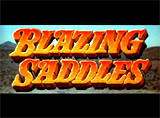
|
The Outlaw Josey Wales (1976)
A great Eastwood revisionistic western, and considered his personal favorite. [Note: It was Eastwood's fifth-directed film and eighth Western as a performer. His next western would be nine years later. It was one of the last few major studio Westerns until the 1990s, marked by Eastwood's own Unforgiven (1992).] Eastwood fully fleshed-out the title character Josey Wales, who became a vengeful, ex-Confederate rebel guerrilla fighter who refused to surrender. Earlier as a farmer during the Civil War along the Kansas-Missouri border, he had witnessed the massacre of his family and pillaging of his farm in a border raid led by marauding renegade Union Red Leg soldier Captain Terrill (Bill McKinney). Regarded as an outlaw after the war, wanted man Wales journeyed westward to Texas, still haunted by the slaughter and driven to murderous revenge. He joined a band of Confederate irregulars under Bloody Bill Anderson (John Russell). He was pursued by bounty hunters and other lawmen, including reluctant Confederate regimental Captain Fletcher (John Vernon). However, the angry loner-fugitive began to regain some of his humanity when he rescued aging Indian Cherokee Lone Watie (Chief Dan George). He also saved farm family settlers from Comanche raiders - pretty love-interest Laura Lee (Sondra Locke) and her spirited, self-righteous Grandma Sarah (Paula Trueman), on their way to settle down on an abandoned ranch near the ghost town of Santa Rio. |
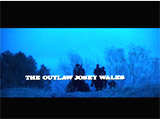
|
The Shootist (1976)
Noted as the final film role for John Wayne, in the role of a dying gunfighter (or "shootist"), paralleling the death of the Old West (with the presence of streetlights, automobiles, trolleys, etc.) - Wayne actually died of stomach cancer three years later. The western swan song opened with a tinted montage (taken from previous Wayne westerns), to showcase the life of notorious and legendary John Bernard (J. B.) Books. After learning of his medical fate (terminal pancreatic cancer) in his hometown of Carson City, Nevada in early 1901, Books rented a room from feisty widow Bond Rogers (Lauren Bacall) and her hero-worshipping son Gillom (Ron Howard) to live out his final painful days - hoping to be shot in the line of "duty" rather than dying in bed. After learning of his presence, numerous foes and past acquaintances showed up in his final few weeks to challenge him or profitably use him for their own ends: Marshall Thibido (Harry Morgan), newspaper reporter Dan Dobkins (Rick Lenz), undertaker Hezekiah Beckum (John Carradine), and even opportunistic ex-girlfriend Serepta (Sheree North). The film climaxed on Books' 58th birthday in the Metropole saloon for a showdown with vengeful gunslinger Mike Sweeney (Richard Boone), Jay Cobb (Bill McKinney), and gambler/dealer and pistol shooter Jack Pulford (Hugh O'Brian). Books shot dead all three opponents, although he was shot twice and seriously wounded. The film concluded with the bartender fatally shooting Books in the back, with young idolizing Gillom picking up Books' gun and killing the man. |
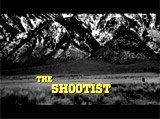
|
(chronological by film title) Introduction | Silents-1930s | 1940s | 1950-1955 | 1956-1959 | 1960-1965 1966-1969 | 1970s | 1980s-1990s | 2000s | 2010s |